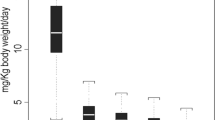Abstract
The factors affecting graft survival in transplant recipients receiving cyclosporin (CsA) are still being debated. Our report is based on an analysis of 202 successive transplantations performed in our institution from May 1984 to December 1986, using low-dose CsA as the basic means of immunosuppression. A total of 142 patients received the triple combination CsA, azathioprine (AZA), and corticosteroids. Sixty patients received a prophylactic combination of CsA, corticosteroids, and antilymphocyte globulins (ALG). From January to December 1986, both regimens were compared in a prospective randomized trial. The factors that affect graft survival were analyzed using the Cox multivariate hazard analysis. The relative risks were calculated for pretransplant baseline risk factors and for outcome-dependent post-transplant risk factors for surviving grafts at 1 month. Transplants performed with a prolonged ischemia time and patients whose graft did not function immediately were statistically at higher risk of graft loss. Adding prophylactic ALG to CsA was associated with better graft survival. patients who experienced more than 1 rejection crisis and patients whose 1-month CsA dose was lower than or equal to 5 mg/kg per day were also at significantly higher risk of further graft loss. Neither HLA matching, peak panel reactivity, age of the recipient, occurrence of post-transplant renal dysfunction nor 1-month renal function affected the short-term graft outcome.
Similar content being viewed by others
References
Bignardi L, Neild GH, Hartley RB, Taube DH, Cameron JS, Rudge CJ, Williams DG, Ogg CS (1987) Histopathological changes in cyclosporine-treated renal allografts biopsied at one and twelve months. Nephrol Dial Transplant 2:366–370
BMDP Statistical Software (1985) University of California Press, Berkeley
Brophy D, Najarian JS, Kjellstrand CM (1980) Acute tubular necrosis after renal transplantation. Transplantation 29:245–252
Calne RY, White DJG, Thiru S, Evans DB, McMaster P, Dunn DC, Craddock GN, Pentlow BD, Rolles K (1978) Cyclosporin A in patients receiving renal allografts from cadaver donors. Lancet II:1323–1327
The Canadian Multicenter Transplant Study Group (1986) A randomised clinical trial of cyclosporine in cadaveric renal transplantation: analysis at three years. N Engl J Med 314:1219–1223
Canafax DM, Torres A, Fryd DS, Heil JE, Strand MH, Ascher NL, Payne WD, Sutherland DER, Simmons RL, Najarian JS (1982) The effects of delayed function on recipients of cadaver renal allografts. Transplantation 18:177–181
Cecka JM, Cicciarelli J, Mickey RM, Terasaki PI (1988) Blood transfusions and HLA matching — an either/or situation in cadaveric renal transplantation. Transplantation 45:81–86
Ferguson RM, Sommer BG (1985) Cyclosporine in renal transplantation: a single institutional experience. Am J Kidney Dis 5:296–307
Fries D, Kechrid C, Charpentier B, Hammouche M, Moulin B (1985) A prospective study of a triple association: cyclosporine, corticoids and azathioprine in immunologically high risk transplantation. Transplant Proc 17:1231–1234
Fries D, Hiesse C, Charpentier B, Rieu P, Neyrat N, Cantarovich M, Ouziala M, Bellamy J, Benoit G (1987) Triple combination of low-dose cyclosporine, azathioprine, and steroids in first cadaver donor renal allografts. Transplant Proc 19:1911–1914
Grino JM, Castelao AM, Sabate I, Mestre M, Gil-Vernet S, Andres E, Sabater R, Alsina J (1987) Low dose cyclosporine, ALG, and steroids in first cadaveric renal transplants. Transplant Proc 19:3674–3676
Hiesse C, Fries D, Charpentier B, Neyrat N, Rieu P, Cantarovich M, Lantz O, Bellamy J, Benoit G (1987) Optimal results in cadaver renal transplantation using prophylactic ALG, cyclosporine, and prednisone. Transplant Proc 19:3670–3671
Kahan BD, Mickey R, Flechner SM, Lorber MI, Wideman CA, Kerman RH, Terasaki P, Van Buren CT (1987) Risk factors for cadaveric donor allograft survival in cyclosporine-prednisone-treated recipients. Transplant Proc 19:1835–1838
Kerman RH, Van Buren CT, Lewis RY, Kahan BD (1988) Successful transplantation of 100 untransfused cyclosporinetreated primary recipients of cadaveric renal allografts. Transplantation 45:37–40
Klintmalm G, Bohman SO, Sunderlin B, Wilczek H (1984) Interstitial fibrosis in renal allografts after 12 to 16 months of cyclosporine treatment: beneficial effect of low doses in early post-transplantation period. Lancet II:950–954
Kumar MSA, White AG, Alex G, Antos MS, Philips EM, Abouna GM (1988) Correlation of blood levels and tissue levels of cyclosporine with the histologic features of cyclosporine nephrotoxicity. Transplant Proc 20:407–413
Lundgren G, Albrechtsen D, Brynger H, Flatmark A, Frodin L, Gabel H, Lindholm A, Maurer W, Moller E, Persson H, Groth CG (1987) Role of HLA matching and pretransplant blood transfusions in cyclosporine-treated recipients of cadaveric renal allografts: 2- to 3-year results. Transplant Proc 19:3614–3619
Myers BD, Sibley R, Stinson E, Newton L, Luetscher JA, Whithney DJ, Kransny D, Coplon NS, Perlroth MG (1988) The long-term course of cyclosporine-associated nephropathy. Kidney Int 33:590–600
Opelz G (1987) Improved kidney graft survival in non-transfused recipients. Transplant Proc 19:149–152
Opelz G (1988) Allocation of cadaver kidneys for transplantation. Transplant Proc 20:1028–1032
Opelz G, for the Collaborative Transplant Study (1988) The benefit of exchanging donor kidneys among transplant centers. N Engl J Med 318:1289–1292
Persijin GG, De Lange P, D'Amaro J, Cohen B, Liebelt P, Hendriks GFJ, Van Rood JJ (1986) Eurotransplant, part II. In: Terasaki P (ed) The cyclosporine era, 1981–1985. Clinical transplants, 1986. UCLA, Los Angeles, pp 99–107
Squifflet JP, Pirson Y, Jamart J, Wallemacq P, Westelinck K, Alexandre GPJ (1985) Cyclosporine in cadaver renal transplantation with good results using conventional treatment. Transplant Proc 17:1212–1217
Stiller CR, Keown PA (1985) Cyclosporine therapy in perspective. In: Morris PJ (ed) Progress in transplantation, vol 1. Churchill Livingstone, Edinburgh London New York, pp 11–45
Sutherland DER, Fryd DS, Strand MH (1985) Results of the Minnesota randomized prospective trial of cyclosporine versus azathioprine-antilymphocyte globulin for immunosuppression in renal allograft recipients. Am J Kidney Dis 5:318–327
Tiwari J, Terasaki PI, Mickey MR (1987) Factors influencing kidney graft survival in the cyclosporine era: a multivariate analysis. Transplant Proc 19:1839–1841
Author information
Authors and Affiliations
About this article
Cite this article
Hiesse, C., Prevost, P., Busson, M. et al. Multiple drug combinations with “low-dose” cyclosporin for renal transplantation. Transplant Int 1, 149–154 (1988). https://doi.org/10.1007/BF00348838
Issue Date:
DOI: https://doi.org/10.1007/BF00348838




